Why Behavior Change is a Bunch of BS and What You Can Do about It
Can a person change their behavior? I have generally been an advocate of behavior change science, however, I am not so sure anymore. Designing healthy habits and routines can be an effective way to elicit change in the appropriate environment. However, similar to some of the legitimacy issues executive consulting faced when “life” coaches hit the scene, a wave of unqualified behavioral “designers” have been able to find an audience due to the increased ease at which garbage can be disseminated thanks to the power of the Internet. An important disclosure is I am one of those peddlers, so I am chucking big rocks at my big glass house. That said, it is long overdue to air some dirty laundry — so here we go…
Recidivism
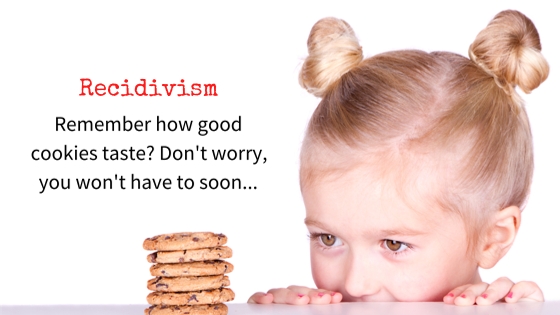
Many popular behavior change interventions are designed for short intervention-behavior lags — i.e. the desired behavior of the user takes place almost at the same time as the intervention is administered. For instance, you see your Fitbit on your arm and get reminded to walk, so you get up from your desk and take a phone meeting outside while walking; or a more common example, a beep in your car nudges you to fasten your seatbelt, you hear the beep and you buckle up. But one of our many dirty little secrets is that these interventions are not particularly useful after the “treatment” has been administered (Rogers & Frey, 2014). For instance, taking the seatbelt example, one study showed that if drivers were reminded to fasten their seatbelt immediately before they drove off, their compliance was significantly better than if they were reminded 5 minutes earlier (Austin, Sigurdsson, & Rubin, 2006). Moreover, and more importantly, a delayed prompt (when there was a 5-minute lag between the prompt and the driver entering the car) the intervention was no more effective than receiving no prompt at all (i.e. the study’s control group). A few minutes seems to be enough for our attention to wander off and for another stimulus to take over — in other words, if a stimulus is not administered in real-time the effectiveness of the behavioral intervention diminishes — if (what people of my sort call) a “trigger” happens after the action that needs changing is taken, the intervention is usually a lot less effective.
Therefore, what behavioral designers and marketers often try to do is alter our thoughts in real time. Real-time stimulus is pretty effective and can acutely change our behavior in the short-term. These tactics are frequently used in conjunction with framing our choice as risk aversion. For example, if you are going to the beach and you get told that by not wearing sunscreen, you will have a higher chance of developing skin cancer, chances are you are more likely to buy sunscreen (for evidence of this see: Detweiler et al., 1999). But, it is questionable at best if you will actually change your habit of generally not buying sunscreen before going out in the sun; in the sunscreen study, the perception of risk was only changed at that moment. Changing thoughts in an enduring matter has proven to be much more difficult. Behavior interventions are supposed to be able to bridge time, but if the intervention is not administered just before the target behavior occurs, this is unlikely to happen. For instance, a study that looked at Biggest Loser contestants showed that during the show — when contestants were bombarded with different inputs, interventions and coaches — participants lost considerable weight. Six years later, however, they gained back an average of 70% of the lost weight (Fothergill et al., 2016).
So, can a person change their behavior?
The hard reality about behavior change is it is not easy to create persistence — although there are different pathways that have been connected with the process for lasting behavior change. The problem is these complicated pathways are rarely designed well in novel behavior change models. Instead, designers look for dramatic results so they can market themselves and their intervention. That is the bullshit part, so what can you do about it?
In their research paper, Todd Rogers and Kerin Frey (researchers from Harvard University) describe some of the features that are likely to bridge time. These include feeling socially accountable (e.g., not wanting to let down family and friends), linking performance with the intervention, pre-committing to a certain behavior and/or deliberately changing perceptions and consequential thoughts (Rogers & Frey, 2014). The importance of this last one (deliberately changing perceptions and consequential thoughts), has been shown to be extremely important for lasting behavioral change. This is why cognitive-behavioral therapy is touted as an evidence-based, efficient technique for changing habits — science continues to support the idea that deliberate practice creates new and lasting cognitive patterns and pathways (Pearson, Lipton, Cleland, & Yee, 2002).
Self-licensing
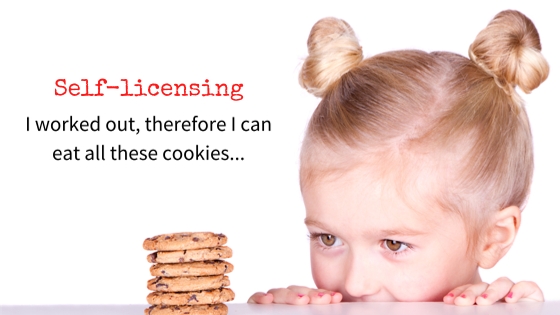
The premise of self-licensing is that when you feel you have invested legitimate effort into something, an internal self-licensing cue can get produced that justifies a negative action, many times in the form of a hedonic action of consumption or self-gratification. Ever remember a time you rewarded your 30 minutes of cardio with a milkshake Jamba Juice. At least one study showed that a self-licensing cue leads to increased snack intake (Witt Huberts, Evers, & De Ridder, 2012). Self-licensing is a distinct behavioral mechanism that has been shown to be associated with unhealthy behaviors — distinct from other self-control failure mechanisms in the sense that the behavioral breakdown is actually masked as a reward.
The rub for you is the phenomenon of self-licensing (sometimes referred to as moral licensing) is widely recognized. Good behavioral designers know when people perform well they will feel liberated to engage in these behaviors (Merritt, Effron, & Monin, 2010). Why do you think most health clubs have a juice bar? Science suggests that even if you simply imagine doing something altruistic, you are more likely to indulge. If you, on the other hand, did not imagine doing a good deed, you are more likely to choose prudent behaviors (Khan & Dhar, 2006). It appears that when we feel virtuous this can often influence our future behavior in a negative way — because come on, we all like a pat on the back once in a while.
False expectations regarding the future also seem to influence our choices. For instance, if we believe we will have to make a certain choice twice, this influences our decision and might make us more self-indulgent. Studies of consumers performed by Khan and Dhar (2007) showed that participants were more likely to choose an unhealthy snack (a chocolate chip cookie) over a healthy snack (low-fat yogurt) if they believed they will have to make the same choice the week after. In other words — in our minds — just projecting we might do something healthy has us doing dumb shit in the present moment. The best advice I have got for you here is to be mindful and simply not do dumb shit. If you are reading this, chances are you are smart, so look at what you are trying to accomplish and gut check yourself to see if you are self-licensing. Since this phenomenon is common with those trying to lose weight I’ll use gym goers as an example. One, your treadmill is lying to you (see: Putting Very Little Weight in Calorie Counting Methods) — if you are looking to create a calorie deficit you are probably already overestimating the calories you have burnt exercising. Two, that fruit smoothie you think is a healthy reward for a job well done — it likely comes close to the caloric intake of a banana split. Not that I am suggesting you drink soda as an alternative, but keep in mind that if that was your guilty pleasure after a hard workout, you would likely be taking in 66% fewer calories than your average juice bar alternative.
Ego Depletion
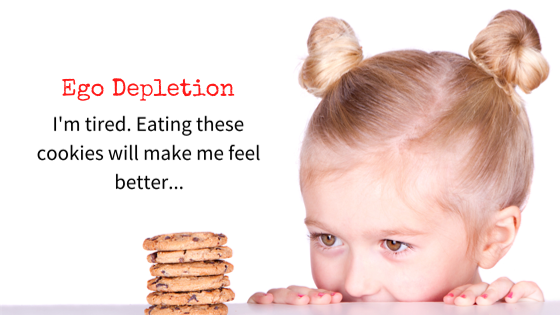
The concept of self-licensing is similar to what some call ego depletion. Ego depletion and willpower have been blogged to death by folks like me so I won’t go too deep here. I am already stoked you have made it this far. The short version though is willpower is seen as a muscle that can get exhausted when we use it a lot (Baumeister et al., 2008). When our willpower’s capacity is temporarily used up, ego depletion causes us to make less restrained choices (like snacking on cookies or cake, instead of more healthy options like fruit or salad). Moreover, and what fascinates researchers is, when we use willpower resources in one area of our lives, this can backfire in seemingly unrelated areas of our lives. For instance, experiments have shown that when people tried to resist the temptation to eat sweets, they subsequently gave up faster on difficult mental exercises (Baumeister et al., 1998).
If you have read this far then by now you either agree or disagree with me that behavior change is incredibly complex and influenced by multiple factors and circumstances. However, to make these complex concepts comprehensible we have really smart thought leaders in this space dumbing down ideas at the cost of holistic comprehension. Take the very popular behavioral model proposed by BJ Fogg (BJ Fogg’s Behavioral Model) — this model has been accused by many that study behavior change as somewhat overly simplistic (although my guess is that for BJ simplicity was his intention). BJ’s model focuses on three elements of behavior: motivation, ability and trigger. In the model, motivation and ability need to be at certain thresholds for a target behavior to be ‘triggered’. BJ also defines subcomponents of each element — in his model, his three core motivators are: pleasure/pain, hope/fear, social acceptance/rejection. What I see as missing in BJ’s model is a road to long-term behavior change, as most of these levers are acute and episodic. The notable exception is social pressure; as I alluded before social pressure has been shown to be a useful method in some cases when we want to cement a certain behavior (we will not go too deep down the rabbit hole of social contagion here, but the science is interesting for those interested). One scientific example is a study that examined people who thought their neighbors could see a report of their energy usage. This group was more likely to reduce their energy usage, and more surprisingly the effect stayed measurable even years after the initial intervention was removed (Allcott & Rogers, 2014) — meaning these folks were still energy conscious even after the reports that their neighbors knew what they were up to stopped coming to their mailbox.
To be fair to BJ, he clearly knows the role environment contributes to our behavior, but the environment’s importance is downplayed in his popular model — and this model is constantly referenced by would-be behavioral designers. In the information regarding his Tiny Habits protocol BJ does mention three things that can change behavior in the long-run: an epiphany (very rare, like: holy shit, I just had a heart attack I should work out more), change of context (hey, what do you know? environment) and taking baby steps (aka BJ’s 2nd baby after his B=MAT model: Tiny Habits).
The truth is BJ just repackaged stuff from Kurt Lewin, that Lewin himself probably repackaged from someone else. We in the business all do this. As a gestalt psychologist, Lewin believed that a person’s environment determines their behavior, which he expressed with his formula: B= f (P, E). Behavior —in his view — is a function of a person (P) and their environment (E). In one of his original books, Lewin actually originally proposed that behavior is a function of a person’s entire situation: B=f(S) …later Lewin expanded situation (S) into person and environment (Lewin, 1936). Lewin’s contribution to behavior change was an emphasis on all the different elements that need to be considered to attempt to understand our behavior. Another gestalt psychologist, Kurt Koffka, summarized this in his famous (though often wrongly translated) saying: The whole is other than the sum of the parts. In other words, it is folly to approach behavior change using a purely reductionist approach. Lewin (1936) found we are often affected differently by the same physical environment, so even though I am admittedly bullish on them, even environmental changes fail us sometime.
However, in my opinion, environmental interventions are where we are seeing the highest return on investment with regards to behavioral design. If you have not already, go down the rabbit hole of Brian Wansink’s work. Wansink is continuing to show us through his research on how environmental design can influence our behavior. For instance, he popularized mindless eating ideas that suggest we often eat things without being aware of its nutritional value or volume (Wansink, 2004).
Halo Effect
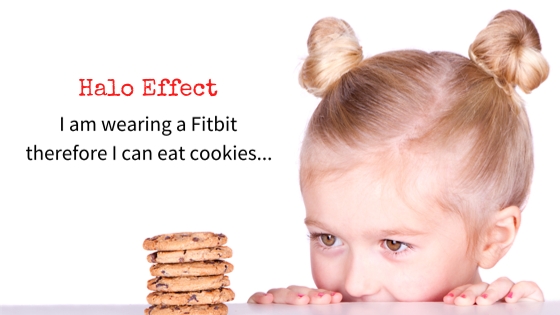
A study published this year in JAMA described a randomized control trial that looked at the efficiency of weight-loss interventions. The hypothesis was that technology-enhanced weight-loss interventions will result in greater weight-loss compared to standard interventions. Surprisingly, the hypothesis was rejected. Participants who received a wearable device and an accompanying Web interface to monitor their diet and physical activity lost less weight compared to those who only received the standard intervention (Jakicic et al., 2016). Other researchers, too, concluded that when it comes to changing behavior, wearables might not be as beneficial as we once believed. I do believe wearables have potential, but it appears they cannot drive health behavior change alone (Patel, Asch & Volpp, 2015). There is a big gap between recording information and behavior change — to be honest after studying this now for over half-a-decade I believe the available data suggests that tracking devices probably cannot bridge this gap. Furthermore, it can take decades for a product to recover from a halo effect (Kerger et al., 2016). To be clear, some wearable devices can indeed deliver change (I am especially bullish on condition-specific wearables). Also, some consumer products prove to be useful tools, because (1) they are often bought by people who are already motivated to change and (2) successful behavioral interventions can be built around them (Patel, Asch & Volpp, 2015). Look: the key to the sustainability of behavior change is to transform external motivation into internal — all of us know it — the problem is that it is a bit tricky.
Destination Addiction
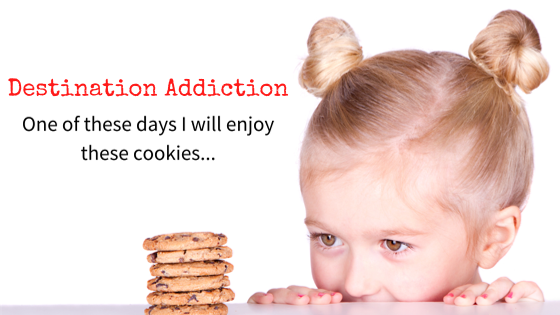
Reality: we need to believe and be enrolled to some degree in our own behavior change, or we are generally just wasting our time. “Destination addiction” refers to those that are always chasing something, but find no fulfillment in the process of change. Take for instance someone who buys a wearable because they believe that tracking their progress will add enjoyment to something they really do not enjoy doing. A lot of my life is spent evaluating these wearables. Many of these devices actually do the opposite (i.e. they add dissatisfaction) by adding unneeded friction to a process that is difficult to begin with — in extreme cases these devices even risk changing our identity (Lupton, 2015). Furthermore, whether supported by a wearable of not, canned behavioral interventions run the risk of missing the real cause of a problem because many only focus on symptoms (for instance, personally I am fat because I drink too much, and I drink too much because my baby cries; how is my Fitbit going to fix my crying baby? I am joking of course, but you get the point). Then there are those that are addicted to fun and find over time that ultimately what brought them initial joy and/or fulfillment in the begin, ends up becoming an arduous cycle of seeking increasing levels of excitement.
Can a person change their behavior using technology?
Rigged protocols and behavior change technologies that run on static algorithms cannot always perform a deep and comprehensive assessment of your individual situation. It is rare that a single behavior change model applies to a large population. Also, behavioral interventions that use technology and online platforms often reduce the amount of human contact you are exposed to (to be fair to hardware and software designers, investors want to know a product is scalable and human invention is rarely scalable). What does minimizing human interaction mean for the future behavior change through technology? I am not totally in the hater camp — some studies show that online therapy can be just as effective as face-to-face contact, plus it is more scalable and affordable (Mohr et al., 2012) — these are truths. However, the jury is out about the long-term effects these interventions can have, specifically their lasting effect on the human psychology and the process of socialization we have discussed throughout. Online interventions are very different from personal interventions. From what I can tell online modalities are not evaluated with the same amount of rigor as face-to-face practice. Also, individuals involved in the delivery of such models are not necessarily competent practitioners, especially since interactive computer-based communication has yet to provide an apples-to-apples comparison to face-to-face verbal exchange (Childress, 2000).
So what should you consider when it comes to evaluating behavioral interventions and their appropriateness? Perhaps some of the more obvious things include transparency regarding the intervention so you can determine fit, level of the interventions intrusiveness and the restrictions the intervention will have on your freedom. Our choices are often limited or eliminated altogether when certain goods or behaviors are banned or restricted — when our intrinsic drive is not truly altered and/or the intervention relies on artificial prohibitions, there is a good chance it can backfire (recidivism).
You see, if we can admit we are gaming ourselves, then at least we can enjoy the game. If we look at the world through the philosophical lenses of James P. Carse who wrote the book Finite and Infinite Games, poor behavior change protocols could be described as finite games. Their purpose is to reach a change, to end the process and win (losing weight, for example). When we rig the system in this fashion, however, we get the results I previously highlighted in the Biggest Loser study. The game is over and we level set to the mean (i.e. back to our previous state). After all, most change comes with the potential for relapse. In my experience, behavior change protocols rarely have contingencies for this strong possibility. As an example, 80 to 95 percent of people who give up smoking or alcohol relapse within the first 12 months (Brandon, Vidrine, Litvin, 2007). I am not giving extra weight to the idea of Infinite Games by concluding with this concept, but do understand that:
- True change is not a destination; and,
- we (and our users) might as well enjoy the ride.
These two ideas (that I hold as truths) will help us architect behavioral interventions for ourselves and others that have a real lasting impact and will not fail us in the long-term.
Man, this post was a lot of words. I would love to stop talking now and learn from you in the comments below. What do you think? Can a person change their behavior?
Sources & further reading:
Austin, J., Sigurdsson, S. O., & Rubin, Y. S. (2006). An examination of the effects of delayed versus immediate prompts on safety belt use. Environment and Behavior, (1), 140-149.
Brandon, T., Vidrine, J., & Litvin, E. (2007). Relapse and relapse prevention. Annual Review of Clinical Psychology, 3, 257-284.
Carse, J. (2011). Finite and infinite games. Simon and Schuster.
Lewin, K. (1936). Principles of Topological Psychology. New York: McGraw-Hill.
Rogers, T., & Frey, E. (2014). Changing Behavior beyond the Here and Now. Working Paper Series. Retrieved from http://scholar.harvard.edu/files/todd_rogers/files/changing_behavior.pdf

Nice work Michael. I’m sharing this to my Facebook page and Twitter feed.
You said:
True change is not a destination; and,
we (and our users) might as well enjoy the ride.
Along those lines, Bryan Cranston in his new book describes how he transformed his relationship to auditions by focusing on the process of auditioning rather than on the outcome of any one audition (always a source of intense anxiety and rumination to actors).
Thanks Michael. I don’t know where to start – you provide so much value here. So, I’ll just leave it at “thank you”!
I read the whole article and am storing the entire thing for future use. *Many* thanks for all the citations! As Gavin said, your comprehensive article contains too many things to comment on. Your caveats about all methods for changing is enough to depress, well, even a therapist. And yet, that is what people are looking for when they come to therapy. And sometimes (far too seldom), people do change. I’ve done my best to come up with ways to think about and then implement change, in a way that can be accomplished by average people. My most comprehensive attempts… Read more »